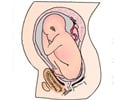The special report highlights the oft neglected maternal and child health topics such as physical abuse during pregnancy, teenage preganancy, female infanticide, women and infertility.

Female infanticide: Reports of female infanticide have been reported since the early times. However, it is not until recently that such issues have attracted public attention. The condition is however a rarely observed phenomenon when compared to sex-selective abortion. Female infanticide represents the deliberate or intentional killing of girl children over liking for baby boys. Inadequate breast feeding, lack of proper attention, inappropriate investment in the interest of the girl child, familial neglect are other less severe forms of prejudice against a girl child. Although the presence of female infanticide has been prevalent for several centuries, several Governments have remained passive or have even denied the existence of such a phenomenon. The much-deserved credit for fighting against this social evil goes to the Non-Governmental Organizations or the NGOs. It was not until that female infanticide was identified as a social problem. The eradication or prevention of such an age-old practice would not be possible without sustained efforts to improve the status of women in the society. It has to be however remembered that interventional programmes targeted at achieving a realistic target can only ensure success of the distant dream.
Teenage pregnancy: Adolescent or teenage pregnancy as it is commonly called is pregnancy occurring in girls aged 19 or even less. A number of political, cultural, emotional, and social issues stem from the controversial issue. Nearly 1 million teenage girls get pregnant each year. The lack of proper knowledge regarding contraception or reluctance to adopt contraception owing to gender fear can account for the ever-increasing number of teen pregnancy rates. Increased inclination to dating behavior, use of alcohol and other drugs, lack of proper familial support, inadequate motivational levels, and sexual abuse/ assault are other predisposing factors. Teenage mothers are emotionally and physically less mature to have a healthy baby compared to old mothers. The risk of infection, anemia, pregnancy induced hypertension, placenta previa, and premature delivery is considerably higher among teenage mothers. The risk of maternal mortality (60%) and infant mortality is much higher in teenage pregnancy. Owing to all the above stated reasons, teen mothers should be provided adequate level of prenatal and postnatal care through both family and social support groups.
Women and Infertility: Infertility can be defined as the inability of a couple to conceive following one year of unprotected intercourse. Infertility affects nearly 1 in every 6 couples trying to conceive. Infertility can be a difficult condition for either partner to cope up. The impact of infertility for an Indian woman is considerable taking into consideration the cultural and social background of the country. Despite the fact that half of all infertility cases can be attributed to a male factor, infertility is still regarded a women’s issue. A woman’s identity is largely defined by bearing children. Infertility is perceived as a threat to a man’s procreativity and lineage continuity. Childlessness can be a cause for anxiety and concern among the affected women, leading to low self-esteem and frustration. Strained marital relationship, physical or psychological abuse (threat of divorce or re-marriage), loss of social and economic security are some of the possible consequences of infertility. Adoption is usually considered a non-viable option due to the pressure of having a ‘biological child’. With changing perceptions regarding the role of women in society and the development of assisted reproductive techniques, such as artificial insemination, in-vitro fertilization and intra-cytoplasmic sperm injection, perhaps a hope is definitely visible over the horizon.
For More Information
https://www.medindia.net/healthday/PregnancyAwarenessWeek.asp#a









